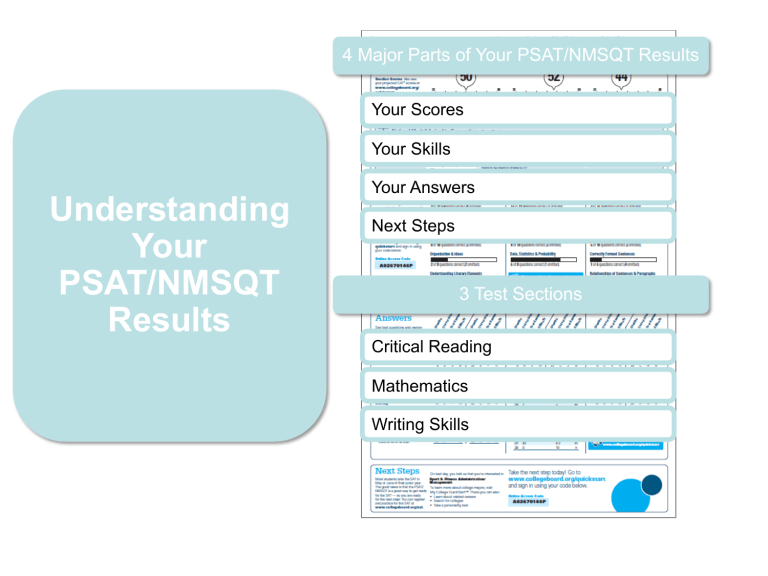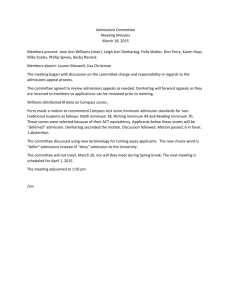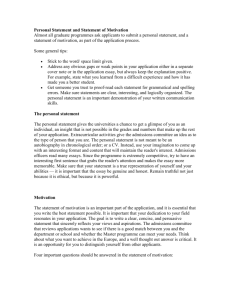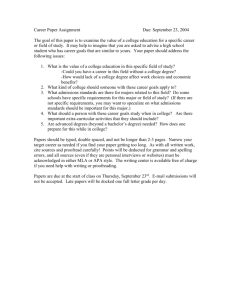college bound testing PSAT SAT ACT parent presentation

Understanding
Your
PSAT/NMSQT
Results
4 Major Parts of Your PSAT/NMSQT Results
Your Scores
Your Skills
Your Answers
Next Steps
3 Test Sections
Critical Reading
Mathematics
Writing Skills
Your Scores
Score
You can see your projected SAT score online in My College QuickStart
( www.collegeboard.org/quickstart ).
Score Range
Percentile
If you are a junior, your scores are compared to those of other juniors.
If you are a sophomore or younger student, your scores are compared to those of sophomores.
National Merit Scholarship
Corporation Information
The Selection Index is the sum of your critical reading, mathematics and writing skills scores.
If it has an asterisk, you do not meet all of the eligibility requirements for the competition.
The Percentile compares your performance to that of other college-bound juniors.
The Entry Requirements section displays information you provided on your answer sheet.
Your Skills
See how you did on each skill. The same skills are tested on the SAT.
You can try hundreds of practice questions, organized by skill, online in My College QuickStart ( www.collegeboard.org/quickstart ).
Your Answers
You will get your test book back with your PSAT/NMSQT results, so that you can review the questions.
You can also review each test question in My College QuickStart.
Your Answers:
Student-Produced
Responses
Some of the math problems required you to grid in answers instead of selecting an option. For these questions, you will see the correct answer(s) written out.
Next Steps
What’s next?
Use the access code on your report to log in to My College
QuickStart, a personalized college and career planning kit. There you can:
•Search for colleges
•Get a personalized SAT study plan
•Take a personality test to find majors and careers that fit you www.collegeboard.org/quickstart
My College QuickStart
SAT vs. ACT:
Which Test Should I Take?
Let’s Get to Know the SAT & ACT
Top Factors in College Admissions
1a) Grades in College Prep Courses
Advanced Placement
International Baccalaureate
Dual-enrollment Courses
Source: National Association of College Admissions Counseling, “2010 State of College
Admission”
Top Factors in College Admissions
1b) Strength of Curriculum
Rigor
Relevance
Quantity
Source: National Association of College Admissions Counseling, “2010 State of College
Admission”
Top Factors in College Admissions
2) Admissions Test Scores
SAT
ACT
AP & Subject Tests
Source: National Association of College Admissions Counseling, “2010 State of College
Admission”
Top Factors in College Admissions
3) High School GPA
Overall
Don’t fall behind
Don’t lose focus
Source: National Association of College Admissions Counseling, “2010 State of College
Admission”
The SAT at-a-Glance
SECTION FORMAT/ TIME QUESTION TYPES
Math
Critical
Reading
Writing
3 Sections
3 Sections
3 Sections
Multiple Choice
Grid-Ins
Multiple Choice
Multiple Choice
Essay
Experimental
Total
1 Section
10 Sections
3 hours, 45 minutes
Multiple Choice
Multiple Choice
Grid-Ins
Essay
SCORE
200–800
200–800
200–800
0–12
Not Scored
2010
Averages
516
501
492
7.1
N/A
600–2400 1509
The ACT at-a-Glance
English
Math
Reading
Science
Writing
Total:
1 Section
1 Section
Multiple Choice
Multiple Choice
1 Section
1 Section
1 Section
4–5 Sections
2 hrs, 55 minutes
3 hrs, 25 minutes
Multiple Choice
FORMAT/ TIME
Multiple Choice
Essay (Optional)
Multiple Choice
Essay
1–36
1–36
1–36
1–36
1 – 36
2 – 12
1–36
20.5
21.0
21.3
20.9
20.8
7.1
21.0
• ACT has “Science” reasoning questions.
• ACT has four trigonometry questions.
• SAT essay is required and first.
• ACT essay is last and not always required.
• SAT is 20 minutes longer.
What Do Colleges Think?
Facts:
• Nearly all schools accept the
SAT or ACT.
• 89% of schools use SAT or
ACT test scores in making admissions decisions*.
Source: National Association of College Admissions Counseling, “Preparation for College Admissions Exams”, 2009
How Do I Decide?
Check out the Facts!
• Take the free SAT-ACT test on their website or pick up practice books from Guidance.
• Look to see if your college of choice requires either
GACOLLEGE411.org
• Create an account as a parent
• Have your student permit access to your parent account
• Research colleges and get to know their requirements




